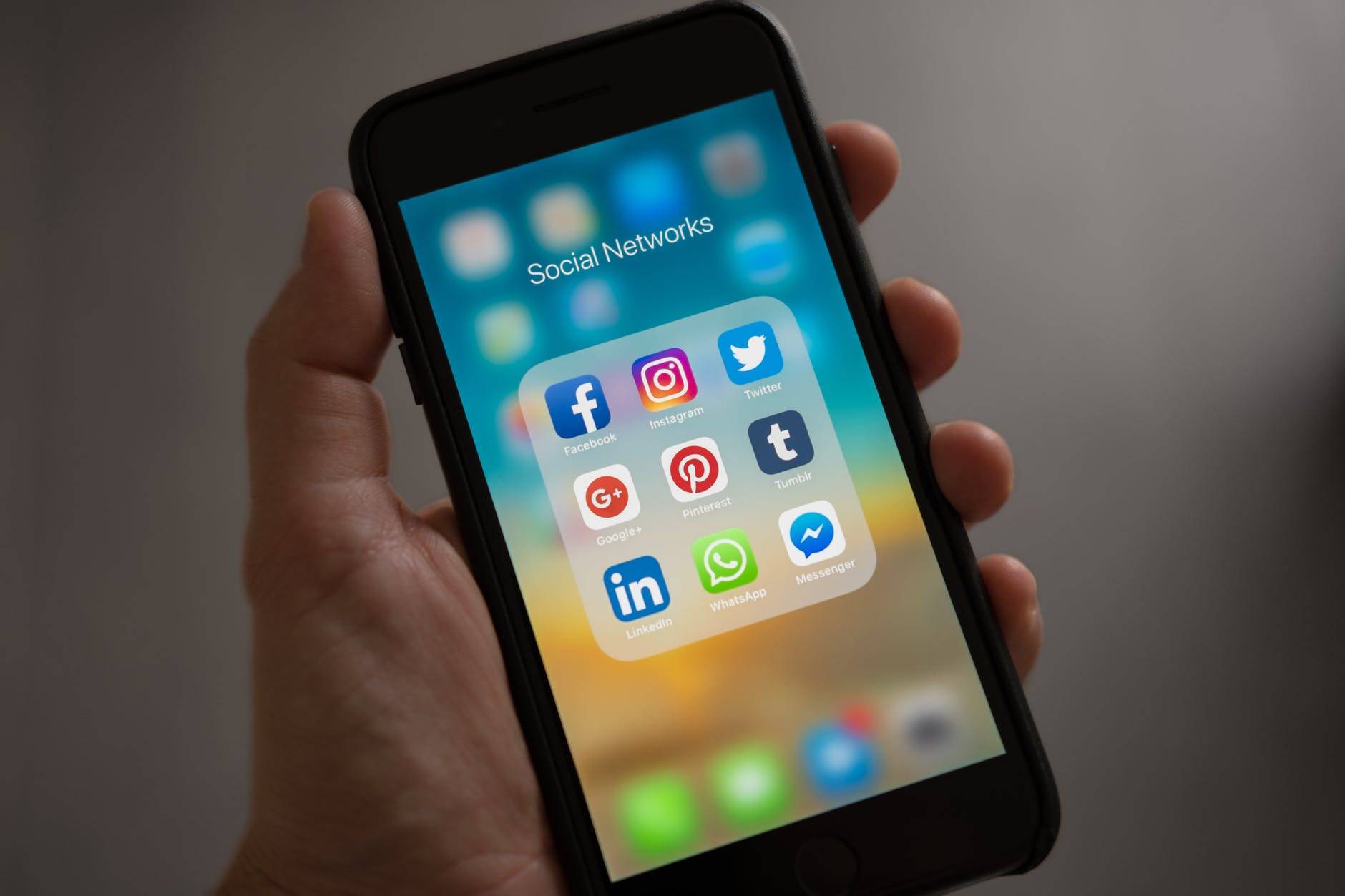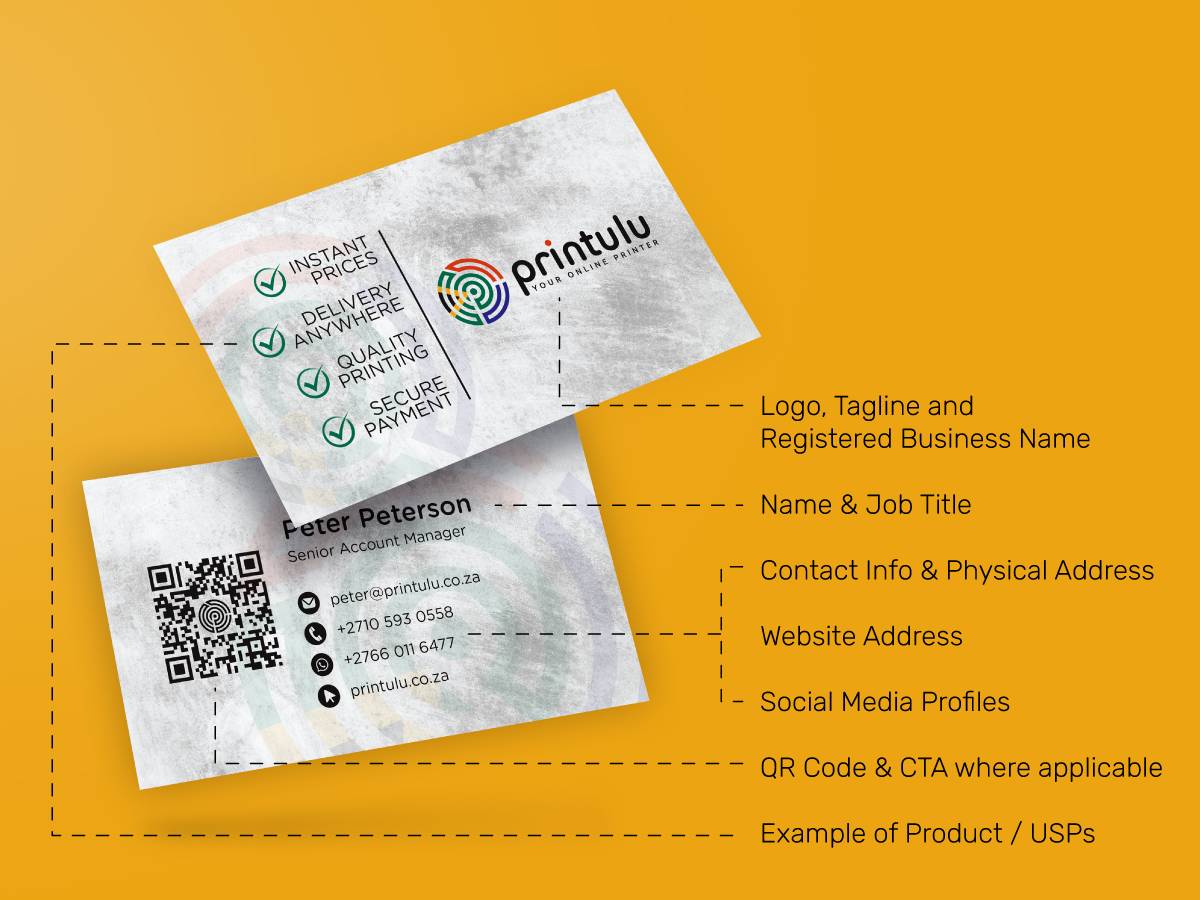It’s easy to assume that business cards are completely obsolete, especially with the new digital age we all find ourselves in. There are arguments as to whether this treasured medium is still necessary. Depending on who you talk to the answer is either a resounding “yes” or a jeering “no”. However, if you’re not using business cards in your marketing collateral, we are here to tell you: you are making a huge mistake. Here’s what to put on a business card and why you need it.
Now before we get to the list, Think about it. What is the point of a business card? Its main purpose is to convey contact details, yes. But there is much more that you need to take into consideration. If you think that business cards have no function other than to give someone your cell phone number, ask yourself: why aren’t all business cards plain with simply some text on them?
We can tell you why – a business card is the very first impression a prospective customer will get of you, your company and your brand. This one piece of physical contact they make with your business can make or break a potential business relationship with your brand. When you think about it that way, doesn’t it only make sense to put as much effort and attention to detail into it as possible?
Here’s what you need to put on your Business Card & Why.
TLDR: What to put on your business card:
- Logo, Tagline and Registered Business Name
- Name & Job Title
- Contact Info & Physical Address
- Website Address
- Social Media Profiles
- QR Code & CTA where applicable
- Example of Product or USPs
Fun Fact about Business Cards according to Tapni: The average website has a conversion rate of 2.35%, while the conversion rate for business cards is 12%.
1. Logo and Tagline
As we mentioned, it’s easy to assume that the most important aspect of a business card is the contact information. We’re not disagreeing with you. However, if your business card has all of the necessary information on it but doesn’t have a clear brand message, it will not make it beyond the trash can. Your logo, tagline and registered business name will give your potential customers an idea of what your business is all about before they have even visited your website. [Related: 4 ways to save money on graphic design]
If your are unsure where to start with your business card and what to put on it, start with your logo. A logo makes customers believe that your brand is credible & trustworthy. Add a tagline that describes what your business stands for or what you do. A lot of businesses choose a name that doesn’t describe what they do and then create a tagline that also doesn’t describe what they do – Don’t make the same mistake.
[Related: Best Free Logo Makers: Could This Be Damaging Your Business? (The Shocking Truth)]
2. Add your Name and job title to your business card
 Your business cards should be an introduction. It sounds obvious, but you’d be surprised at how many people actually get this detail wrong. If your full name is Viktor Michael Jonathan the Second, go with the name that you prefer to be called. Your job title should be treated in a similar way. Resist the urge to put your entire list of achievements on the card, and focus on the title that describes what you actively do in the company the most.
Your business cards should be an introduction. It sounds obvious, but you’d be surprised at how many people actually get this detail wrong. If your full name is Viktor Michael Jonathan the Second, go with the name that you prefer to be called. Your job title should be treated in a similar way. Resist the urge to put your entire list of achievements on the card, and focus on the title that describes what you actively do in the company the most.
3.Contact information & Physical Address
 The contact information is the meat of the business card and should be accurate. Remember, your business cards are an introduction to you. What you put on your business card is a snapshot of you. When you’ve given your business card to someone by hand (preferably while making eye contact), that person has already formed a connection with you. The last thing you need is for them to have to call a generic office number that leads them through a series of beeps and tones before they can speak personally to you again. Make sure the information on the card is personalised and working smoothly.
The contact information is the meat of the business card and should be accurate. Remember, your business cards are an introduction to you. What you put on your business card is a snapshot of you. When you’ve given your business card to someone by hand (preferably while making eye contact), that person has already formed a connection with you. The last thing you need is for them to have to call a generic office number that leads them through a series of beeps and tones before they can speak personally to you again. Make sure the information on the card is personalised and working smoothly.
Nowadays, it is very popular to add a WhatsApp number to your business card.
4. Your website address
In today’s technologically driven age, this is a given. However, simply sending your potential client to your website home page may not be enough. Why not create a page specifically for welcoming the people who were impressed enough by your business card to actually use the link on it? A welcoming page, perhaps with a special offer to encourage them to use your product or service, is the ideal way of getting them from being a prospective customer to an actual buying customer.
5. Social media profiles
 Everyone and their grandmother is on social media these days. Social media channels have become indispensable parts of both traditional and virtual businesses. If you’re not on social media, you practically don’t exist to your clients. Sharing your social media platforms with clients builds trust and shows a sense of transparency with how you operate. However, don’t list every single page you own – be strategic about which accounts you are sharing, and make sure they will provide your clients with a good idea of how your business works.
Everyone and their grandmother is on social media these days. Social media channels have become indispensable parts of both traditional and virtual businesses. If you’re not on social media, you practically don’t exist to your clients. Sharing your social media platforms with clients builds trust and shows a sense of transparency with how you operate. However, don’t list every single page you own – be strategic about which accounts you are sharing, and make sure they will provide your clients with a good idea of how your business works.
6. A QR Code & CTA if Applicable
Don’t forget about QR codes. If you are unhappy with the basic idea of simply printing out your website url in writing, remember that QR codes provide the perfect way of making this aspect stand out more on the card. A QR can scan through to a special welcoming page or a dsicounted price to drive sales. As mentioned earlier, a biusiness card has a much higher conversion rate than a website, with the right flow, you can lock in clients faster with these cards.
7. Example of your Product
Ever heard the saying, the proof is in the pudding? If possible, you should add in an example of your product on your business card. This can activate the imagination of the client. Getting them to easily envision their life with your product in it.
Other considerations for your Business cards
1. White space
We felt that this was so important, it needed its own point on the list. Business cards need white space. Don’t clutter them with too much information. Remember the point of the business card is to introduce, not tell them your whole life’s story. For that we’ve got brochures, flyers, booklets and pamphlets. Clutter doesn’t invite anyone and will instead overwhelm your client. Be strategic about what you include and don’t include on the card, and remember that there is more than one side to the business card that is available for printing.
2. Good design
This is the be-all and end-all of your business cards. Even if you follow each of the above steps perfectly, if they were not designed professionally, they will likely still end up at the bottom of someone’s musty handbag or in the trash. For more tips on how to keep your business cards looking professional and classy, check out our blog on design do’s and major design don’ts.
Remember, even the most beautiful and perfect business cards can be ruined if they are printed badly. At Printulu we guarantee you top-quality business cards with free delivery to your home, anywhere in South Africa.
[Related: Business Card Creation: The 5 Must Do’s]
Conclusion – Your own personal billboard that creates a lasting impression
Yes, you have various devices and other means of connecting with people. However, there is an advantage to having your business cards handy with you. It’s a quick and easy way to connect with someone you meet whether at a networking event, conference, dinner/lunch party, airport lounge, etc. While sharing your contact details they can also convey the personality and appeal of your brand, consider this when choosing your design, formats and finishes.
[Related: Tools for Entrepreneurs: How to start in a world of Amazon and Co.]
Resources
- 5 Reasons Business Cards Still Matter
- 28 cool business card ideas that seal the deal
- 4 tips to get you started in business card design
- How to design a business card: the ultimate guide
Related
- Your Business Stationery Checklist
- 4 ways to save money on graphic design
- Is your typography print ready?
- Tools for Entrepreneurs: How to start in a world of Amazon and Co.
- Top design websites for non-designers
- Disappointed with your prints? Don’t blame the printer just yet.
- Plastic PVC Cards – The What, How And Why Of PVC Card Printing
- What Paper to Print Business Cards On





